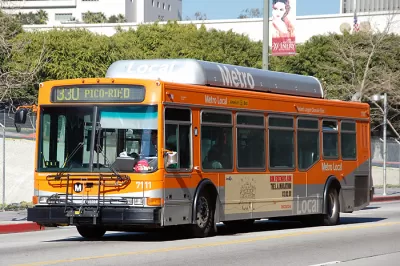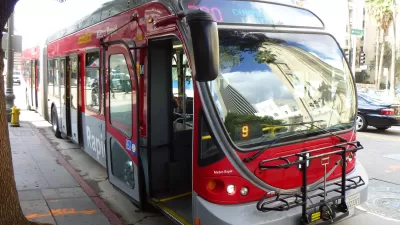With many U.S. transit agencies facing severe gaps in service and budget shortfalls, some advocates argue that improved service matters more than free fares.

Despite a "growing movement" to make public transit fare-free, Henry Grabar argues in a piece for Slate that getting rid of fares would not help the poorest and most underserved transit riders. Jarrett Walker, a Portland-based transit planner and author of Human Transit, agrees. "I’ve heard people describe the free fare movement as being a movement for free, terrible service, and that’s how the trade-off ends up working if you expect this to happen inside the budget of an impoverished American transit agency." While research shows that low-income riders do use transit more when offered discounts, they also "overwhelmingly said reliability was a bigger concern than affordability."
Advocates for free transit argue that it's a matter of priorities. The Los Angeles County Metropolitan Transportation Authority, for example, "spends many times its bus budget on capital projects and highways, funds that could easily be reapportioned to bulk up its transit offerings." Yet "[m]ost transit experts support targeted discount programs for low-income riders, like the one operated by King County, Washington, which runs transit service in Seattle. They also admit they haven’t done a great job helping people access such programs, a point in favor of a 'free school lunch' analogy; benefits are only good if people can get them." Improving accessibility and service, writes Grabar, could do more to increase ridership than free fares. Ultimately, "[r]iders say they want better service, not cheaper service."
Steven Polzin also wrote a detailed cost-benefit analysis of reduced- and free-fare transit for Planetizen in 2018.
FULL STORY: The Problem With Free Transit

Study: Maui’s Plan to Convert Vacation Rentals to Long-Term Housing Could Cause Nearly $1 Billion Economic Loss
The plan would reduce visitor accommodation by 25,% resulting in 1,900 jobs lost.

North Texas Transit Leaders Tout Benefits of TOD for Growing Region
At a summit focused on transit-oriented development, policymakers discussed how North Texas’ expanded light rail system can serve as a tool for economic growth.

Why Should We Subsidize Public Transportation?
Many public transit agencies face financial stress due to rising costs, declining fare revenue, and declining subsidies. Transit advocates must provide a strong business case for increasing public transit funding.

How to Make US Trains Faster
Changes to boarding platforms and a switch to electric trains could improve U.S. passenger rail service without the added cost of high-speed rail.

Columbia’s Revitalized ‘Loop’ Is a Hub for Local Entrepreneurs
A focus on small businesses is helping a commercial corridor in Columbia, Missouri thrive.

Invasive Insect Threatens Minnesota’s Ash Forests
The Emerald Ash Borer is a rapidly spreading invasive pest threatening Minnesota’s ash trees, and homeowners are encouraged to plant diverse replacement species, avoid moving ash firewood, and monitor for signs of infestation.
Urban Design for Planners 1: Software Tools
This six-course series explores essential urban design concepts using open source software and equips planners with the tools they need to participate fully in the urban design process.
Planning for Universal Design
Learn the tools for implementing Universal Design in planning regulations.
City of Santa Clarita
Ascent Environmental
Institute for Housing and Urban Development Studies (IHS)
City of Grandview
Harvard GSD Executive Education
Toledo-Lucas County Plan Commissions
Salt Lake City
NYU Wagner Graduate School of Public Service





























